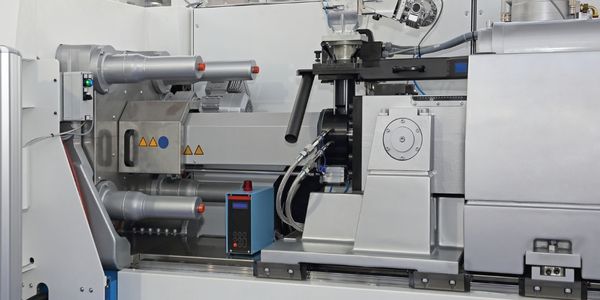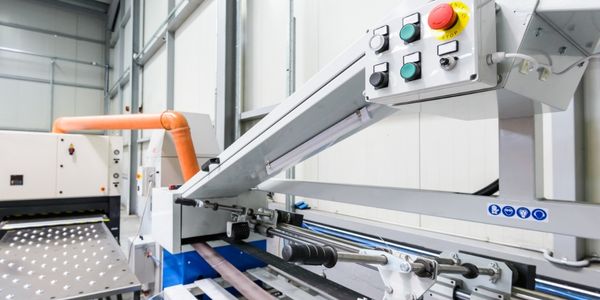Customer Company Size
SME
Region
- America
Country
- United States
Product
- Acumatica Financial Management Suite
- Acumatica Distribution Management Suite
Tech Stack
- SQL database
- Acumatica
Implementation Scale
- Enterprise-wide Deployment
Impact Metrics
- Productivity Improvements
- Cost Savings
Technology Category
- Platform as a Service (PaaS) - Data Management Platforms
Applicable Functions
- Discrete Manufacturing
Use Cases
- Inventory Management
- Manufacturing System Automation
Services
- System Integration
- Cloud Planning, Design & Implementation Services
About The Customer
Lockwood Products Inc. is a manufacturing company based in Lake Oswego, Oregon. The company is the inventor of the modular coolant hose known as Loc-Line. The hose is used for a variety of different purposes including air delivery in large aquariums and smoke and dust removal vacuum systems. Many consumers know it as the stable but flexible hose that helps them position cameras like the Go-Pro®. The company was founded in 1981 by Arnold Lockwood and has since grown significantly. The company's president and CEO is Chad Lockwood.
The Challenge
Lockwood Products Inc., the inventor of the modular coolant hose known as Loc-Line, was facing challenges in managing its growing business with two disconnected financial systems. The company was using QuickBooks Enterprise for financials and an add-on product called Activate for inventory and order entry. The process of jumping back and forth between the two systems was becoming increasingly frustrating. Additionally, accessing data and creating reports was a complex task as it involved exporting data to spreadsheets, writing inquiries in the SQL database management console that was part of Activate, and creating reports using Crystal Reports.
The Solution
Lockwood Products decided to adopt Acumatica, a cloud-based enterprise resource planning (ERP) solution, to better manage its daily order processing, gain better inventory management, and realize the benefits of a tightly integrated ERP. The company engaged the help of Bennett/ Porter & Associates, an IT firm, to implement the new system. Acumatica's Financial Management Suite and Distribution Management Suite were chosen for the implementation. The new system offered a unified interface for all modules, a robust SQL database for data storage, local product support, and a substantial base of customers. The implementation was completed on time and on budget.
Operational Impact

Case Study missing?
Start adding your own!
Register with your work email and create a new case study profile for your business.
Related Case Studies.

Case Study
Plastic Spoons Case study: Injection Moulding
In order to meet customer expectations by supplying a wide variety of packaging units, from 36 to 1000 spoons per package, a new production and packaging line needed to be built. DeSter wanted to achieve higher production capacity, lower cycle time and a high degree of operator friendliness with this new production line.

Case Study
Robot Saves Money and Time for US Custom Molding Company
Injection Technology (Itech) is a custom molder for a variety of clients that require precision plastic parts for such products as electric meter covers, dental appliance cases and spools. With 95 employees operating 23 molding machines in a 30,000 square foot plant, Itech wanted to reduce man hours and increase efficiency.

Case Study
Hospital Inventory Management
The hospital supply chain team is responsible for ensuring that the right medical supplies are readily available to clinicians when and where needed, and to do so in the most efficient manner possible. However, many of the systems and processes in use at the cancer center for supply chain management were not best suited to support these goals. Barcoding technology, a commonly used method for inventory management of medical supplies, is labor intensive, time consuming, does not provide real-time visibility into inventory levels and can be prone to error. Consequently, the lack of accurate and real-time visibility into inventory levels across multiple supply rooms in multiple hospital facilities creates additional inefficiency in the system causing over-ordering, hoarding, and wasted supplies. Other sources of waste and cost were also identified as candidates for improvement. Existing systems and processes did not provide adequate security for high-cost inventory within the hospital, which was another driver of cost. A lack of visibility into expiration dates for supplies resulted in supplies being wasted due to past expiry dates. Storage of supplies was also a key consideration given the location of the cancer center’s facilities in a dense urban setting, where space is always at a premium. In order to address the challenges outlined above, the hospital sought a solution that would provide real-time inventory information with high levels of accuracy, reduce the level of manual effort required and enable data driven decision making to ensure that the right supplies were readily available to clinicians in the right location at the right time.

Case Study
Fully Automated Visual Inspection System
Tofflon has developed a fully automatic machine that uses light to inspect vials, medicine bottles, or infusion containers for glass fragments, aluminum particles, rubber grains, hairs, fibers, or other contaminants. It also detects damaged containers with cracks or inclusions (microscopic imperfections), automatically removing faulty or contaminated products. In order to cover all production processes for freeze-dried pharmaceuticals, Tofflon needed to create an open, consistent, and module-based automation concept.

Case Study
SAP Leonardo Enabling Rocket Science
At times, ULA has as many as 15 different operating systems dedicated to overlapping processes, such as rocket design, testing, and launch. Multiple systems created unnecessary costs and unwanted confusion among workers at offices, factories, and launch sites in different location. In order to improve collaboration and transparency during vital activities that directly influence mission success, ULA wanted to improve data sharing and streamline manufacturing processes.








